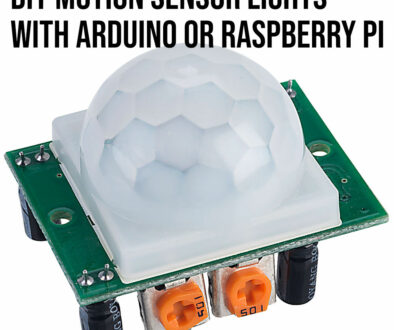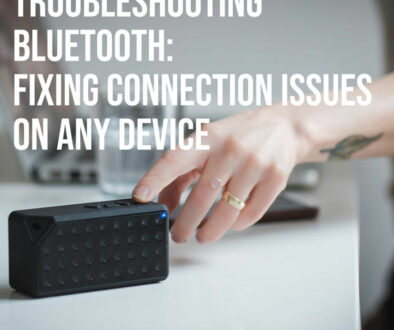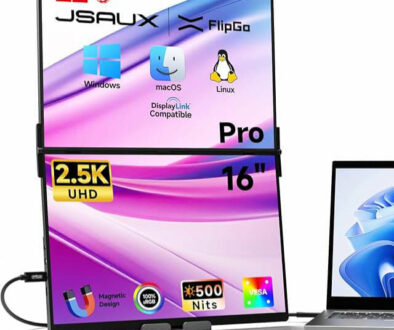How to Upgrade Your Car with Smart Tech: Dash Cams, Wireless Charger, Bluetooth Adapters and More
Modern cars come equipped with cutting-edge technology, but if you own an older vehicle, you don’t have to miss out on the latest smart features. From safety-enhancing dash cams to Bluetooth adapters that bring wireless connectivity, upgrading your car with smart tech is easier and more affordable than ever.
You can enhance your car with smart tech upgrades that boost security, enable hands-free communication, and add modern convenience. Many plug-and-play solutions are easy to install, requiring little to no technical expertise. This guide covers some of the best options, beginning with essential devices like dash cams and Bluetooth adapters.
1. Dash Cams: Enhancing Safety and Security
A dash cam is one of the smartest investments you can make for your car. These compact cameras continuously record the road ahead (and sometimes behind), providing crucial evidence in case of accidents, insurance claims or even theft. With rising cases of road incidents and fraudulent claims, having a dash cam can protect you from liability and give you peace of mind.
There are several types of dash cams to consider. Basic front-facing models capture everything in your line of sight, while dual-lens versions record both the road and the car’s interior or rear view. More advanced AI-powered dash cams come with driver-assistance features, such as lane departure warnings and collision detection.
When choosing a dash cam, look for key features like high-resolution recording (1080p or 4K), night vision for low-light clarity, loop recording to prevent storage issues and a G-sensor that automatically saves footage in the event of an impact. Some models also offer cloud storage, allowing you to access video remotely.

Popular dash cam brands like Nextbase, Garmin, and BlackVue provide options for every budget, from entry-level models to high-end solutions with GPS tracking and voice control. An alternative to the Dash Cam is the Smart Rearview Mirrors that we will also look at in this article.
2. Bluetooth Adapters: Modern Connectivity for Older Cars
If your car doesn’t have built-in Bluetooth, a Bluetooth adapter is a simple and cost-effective way to upgrade your vehicle’s audio and hands-free calling capabilities. Many older cars still rely on AUX cables or outdated radio systems, but with a Bluetooth adapter, you can wirelessly stream music, take calls and even use voice assistants like Siri or Google Assistant without touching your phone.

There are three main types of Bluetooth adapters: FM transmitters, AUX-in Bluetooth receivers, and Bluetooth-enabled stereo replacements. FM transmitters plug into your car’s cigarette lighter and broadcast audio over an unused FM frequency, making them compatible with nearly any car. AUX-in receivers connect directly to your car’s auxiliary input for a more stable and higher-quality sound. For those willing to invest in a more permanent upgrade, replacing the head unit with a Bluetooth-enabled car stereo provides the best overall experience, often including support for Apple CarPlay and Android Auto.

When selecting a Bluetooth adapter, consider factors such as audio quality, ease of use, and multi-device pairing. Some high-end models even include built-in noise cancellation for clearer phone calls. Popular options from brands like Anker, TaoTronics, and Nulaxy cater to different needs and budgets, ensuring that any car—regardless of age—can enjoy modern wireless connectivity.

3. Smart Assistants & Voice Control: Hands-Free Convenience
With the rise of voice assistants like Amazon Alexa, Google Assistant, and Apple’s Siri, you no longer have to take your hands off the wheel to control music, navigation, or even send messages. Smart assistants designed for cars bring hands-free convenience, allowing you to interact with your vehicle as if you were talking to a co-pilot. Asking for directions, checking the weather, or adjusting your music playlist; a voice assistant keeps you focused on the road while enhancing your driving experience.
There are several ways to integrate a smart assistant into your car. Devices like Amazon Echo Auto, Google Nest Mini, or Apple’s built-in CarPlay system enable seamless voice control. Echo Auto connects to your phone and plays through your car’s speakers, allowing you to use Alexa commands for navigation, reminders, and entertainment. Similarly, Google Assistant can be activated through Android Auto or a standalone Bluetooth speaker. For Apple users, CarPlay offers the best integration, letting you control apps, messages, and calls using Siri.

When choosing a smart assistant, consider compatibility with your smartphone and vehicle audio system. Some models require Bluetooth connectivity, while others work through an auxiliary input or FM transmitter. If your car doesn’t support native voice control, a third-party assistant device is a great way to bring your vehicle into the modern era.
4. Wireless Charging & Phone Mounts: Keeping Devices Powered on the Go
Between navigation, music streaming, and hands-free calls, smartphones have become essential travel companions. However, constant usage can drain your battery quickly. A wireless charging mount solves this problem by keeping your device powered without the hassle of tangled cables.
There are several types of wireless charging solutions for cars, including vent-mounted, dashboard-mounted, and cup-holder-style chargers. Vent mounts offer a compact design that keeps your phone within reach, while dashboard-mounted chargers provide better visibility for navigation apps. Cup-holder chargers are ideal for those who prefer a clutter-free dashboard. Many wireless chargers come with fast-charging support for devices that are Qi-compatible, ensuring a quick and efficient power boost while you drive.

When choosing a wireless charging phone mount, look for features like a secure grip to prevent your phone from falling on rough roads, automatic clamping for one-handed use and adjustable viewing angles for optimal placement. Some of the best wireless car chargers come from brands like Belkin, Anker, and iOttie, offering a blend of reliability, fast charging speeds, and sleek design.

5. GPS Trackers: Security and Peace of Mind
A GPS tracker is a valuable addition to any vehicle, be it for security purposes, real-time location tracking or fleet management. These devices allow you to monitor your car’s location remotely, making them an excellent tool for theft recovery or keeping an eye on family members who share your vehicle.
There are different types of GPS trackers available. OBD-II port trackers plug directly into your car’s diagnostic system, providing live location tracking and additional insights like fuel efficiency and driving behavior. Hardwired GPS trackers are installed directly into the vehicle’s power system, making them harder to detect and disable—ideal for anti-theft protection. Battery-powered portable trackers on the other hand, offer flexibility and can be moved between vehicles as needed.
Some GPS trackers come with companion apps that provide real-time location updates, geofencing alerts (notifying you when the car leaves a designated area), and historical trip data. Popular brands like Vyncs, Bouncie, and SpyTec offer models that suit different tracking needs, from basic location tracking to comprehensive vehicle diagnostics. Investing in a GPS tracker not only enhances security but also provides useful insights into your driving habits.

Also read our article on AirTags for Cars: Genius Life Hacks or False Sense of Security?
6. Smart HUDs (Heads-Up Displays): Bringing Futuristic Displays to Any Car
A Heads-Up Display (HUD) projects essential driving information onto your windshield, allowing you to keep your eyes on the road without constantly glancing at your dashboard. Originally found in high-end luxury cars, aftermarket HUDs now make this futuristic feature accessible to any vehicle. These smart displays provide real-time data such as speed, navigation directions, fuel efficiency, and even traffic alerts.

HUDs come in different types, from basic models that project a reflection onto a transparent film on the windshield to more advanced versions with integrated augmented reality (AR) elements. Some HUDs connect to your car’s OBD-II port for real-time vehicle diagnostics, while others sync with your smartphone for GPS navigation and app notifications. Features to look for include brightness adjustability for visibility in different lighting conditions, customisable display options, and voice control compatibility.

If Apple CarPlay or Android Auto is all you are after, affordable HUDs that syncs with your smartphone are also available giving you safe and car friendly access to your favourite apps. These add-on HUDs just needs a solid mount, power source and connection either via Bluetooth or Aux wired to your car’s audio.
Leading brands like Hudly, Garmin, and Navdy offer some of the best aftermarket HUDs, ensuring a safer and more immersive driving experience.
7. OBD-II Scanners & Smart Car Diagnostics
An OBD-II (On-Board Diagnostics) scanner is an essential tool for car owners who want to stay informed about their vehicle’s health. This small device plugs into your car’s diagnostic port, providing instant access to error codes, engine performance data, and maintenance alerts. Instead of relying solely on a mechanic to diagnose issues, a smart OBD-II scanner allows you to monitor your vehicle in real-time and catch potential problems early.
There are two main types of OBD-II scanners: basic code readers and advanced Bluetooth-enabled models. Basic scanners display diagnostic trouble codes (DTCs), helping you identify issues like engine misfires or emissions problems. More advanced Bluetooth scanners sync with a smartphone app to provide in-depth insights into fuel efficiency, driving habits, and predictive maintenance alerts. The latter also means that if you have an Apple CarPlay or Android compatible HUD, you can call up the app to look at live data from your car, marrying the three devices, ODB-II scanner, Smartphone and HUD via Bluetooth.

Popular OBD-II scanners like the FIXD, BlueDriver, and Carista provide user-friendly apps that translate complex error codes into easy-to-understand explanations. Some even offer live data tracking and customisable dashboards for performance tuning. If you are a car enthusiast looking to optimise performance or a casual driver wanting to avoid unexpected repair costs, a smart OBD-II scanner is a valuable addition to your tech arsenal.
8. Upgrading Audio Systems: Smarter Sound Solutions
A high-quality audio system can transform your driving experience, and smart audio upgrades now offer more than just better sound. Integrating Apple CarPlay, Android Auto or wireless streaming can come from modern audio solutions make it easier to enjoy music, podcasts, and calls with enhanced clarity.
There are several ways to upgrade your car’s audio system. If your vehicle lacks built-in Bluetooth, installing a wireless CarPlay or Android Auto system allows for seamless smartphone integration. Smart DSP (Digital Signal Processor) amplifiers optimise audio quality by adjusting sound settings in real-time, creating a richer and more immersive listening experience. Additionally, upgrading to smart speakers or subwoofers can improve bass response and overall sound clarity.

When choosing an audio upgrade, consider compatibility with your existing system, ease of installation and additional features like voice control and touchscreen functionality. Brands like Pioneer, Sony, and Alpine offer some of the best smart audio solutions, catering to both casual listeners and audiophiles.
9. Smart Rearview Mirrors: A Digital Upgrade
A smart rearview mirror does more than just reflect what’s behind you—it can function as a dash cam, backup camera, and even a smart display. These high-tech mirrors replace or clip onto your existing rearview mirror and feature a built-in touchscreen display with live video feeds, navigation assistance, and smart alerts.
Smart rearview mirrors typically come with front and rear cameras, providing continuous recording for added security. Many models also include night vision, lane departure warnings, parking assistance, and GPS tracking. Unlike traditional mirrors, they offer a wider field of view and reduce glare, making them particularly useful in low-light or poor weather conditions.

When selecting a smart rearview mirror, consider features such as video resolution (1080p or 4K), touchscreen responsiveness, parking mode, and cloud storage options. Leading brands like Auto-Vox, Junsun, and Wolfbox provide high-quality smart mirrors that enhance visibility and security while giving your car a modern touch.
10. In-Car Wi-Fi & Hotspot Devices: Stay Connected on the Go
Having Wi-Fi in your car can make road trips, remote work and daily commutes more convenient. You can use the Internet for streaming music, using navigation apps or keeping passengers entertained using a separate in-car Wi-Fi hotspot. This ensures seamless connectivity without draining your phone’s data plan. It also saves on devices battery power as devices that connect via WiFi to the hotspot instead of changing between phone masts as you move from one location to another.
There are several ways to set up Wi-Fi in your car. Some modern vehicles come with built-in Wi-Fi modules, but if your car doesn’t, you can use portable Wi-Fi hotspots, OBD-II Wi-Fi dongles, or mobile routers. Cellular-based Wi-Fi hotspots work with a SIM card, providing a reliable connection through 4G or 5G networks, while OBD-II dongles plug into your car’s diagnostic port and use cellular data to create a network. But the quicker and cheapest way is to enable the WiFi hotspot on your smartphone or an old smartphone and share this with others.

When choosing an in-car Wi-Fi solution, consider factors like network coverage, data plan costs, number of devices supported, and battery life. Top brands like Verizon Jetpack, Netgear Nighthawk, and AT&T In-Car Wi-Fi offer reliable options tailored to different needs. With an in-car Wi-Fi setup, you can enjoy smooth video streaming, online gaming for passengers, and uninterrupted navigation, making long drives more enjoyable.
Closing Thoughts
Other ways to inject more tech into your car includes remote start, smart keyless entry and tire pressure monitoring system (TPMS). Except for the last option, these after market setups will require professional installation as it rips out existing systems i.e. door locks and ignition to replace them with RFID or Bluetooth enabled units.

Upgrading your car with smart tech is no longer reserved for luxury vehicles. With affordable and easy-to-install devices, any car regardless of its age can be transformed into a high-tech, connected, and secure vehicle. From dash cams and Bluetooth adapters to wireless chargers, GPS trackers, and smart rearview mirrors, these upgrades enhance safety, convenience, and entertainment for drivers and passengers alike.
When selecting smart tech for your car, consider your needs, budget, and ease of installation. Some devices, like Bluetooth adapters and wireless chargers, are simple plug-and-play solutions, while others, such as HUDs and smart keyless entry systems, may require professional installation.
You can enhance your driving experience with smart tech upgrades that improve road safety, upgrade in-car entertainment, and introduce futuristic features. A Bluetooth adapter or dash cam is a great starting point, with options to expand to advanced features like remote start or in-car Wi-Fi. The right gadgets can seamlessly integrate modern technology into your vehicle, making every drive more convenient and connected.










